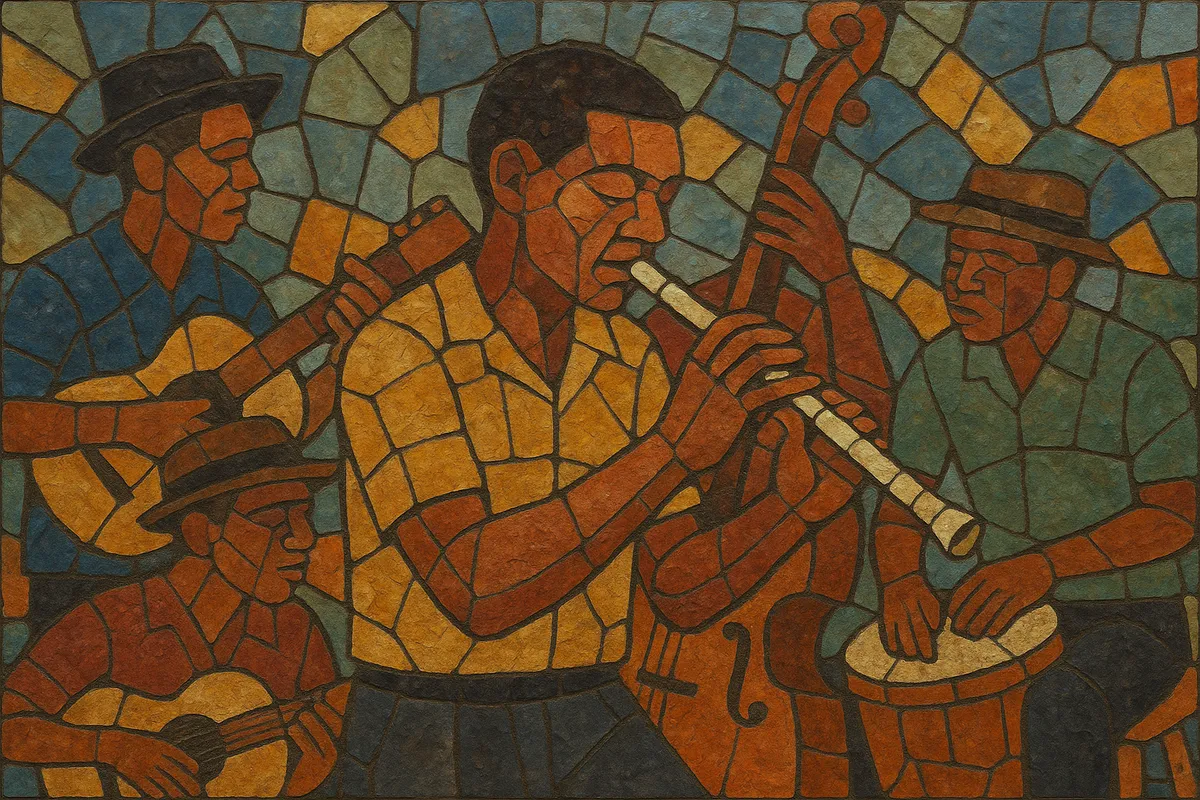Kwela is a lively South African street music built around the pennywhistle (tin whistle), whose bright, reedy tone plays jaunty melodies and riffs over a shuffling, swing-derived groove. Typically performed by small, mobile ensembles, it blends township dance rhythms with American jazz and jump-blues feel, creating a buoyant, singable style that is both rhythmic and melodic.
Emerging in 1950s urban townships like Sophiatown and Alexandra, kwela often featured inexpensive, portable instruments—pennywhistle, acoustic guitar or banjo, one-string or upright bass, and light percussion—making it ideal for busking and informal dances. Its name is commonly linked to the police "kwela-kwela" vans and to a Nguni verb meaning "to climb," reflecting both the social realities of the time and the music’s irrepressible upward lift.
Kwela took shape in 1950s South Africa, especially in Sophiatown and Alexandra, where rapid urbanization and a vibrant shebeen (informal bar) culture fostered a distinctive township sound. Cheap, portable pennywhistles allowed young musicians to form street bands, riffing on marabi harmony and American swing/jump-blues rhythms. The term "kwela" is often tied to township slang and the police "kwela-kwela" vans, a reminder of apartheid-era policing that coexisted with the music’s celebratory street energy.
By the mid-to-late 1950s, kwela had generated national stars. Spokes Mashiyane’s virtuosic pennywhistle playing became emblematic of the style, while Elias and His Zig-Zag Jive Flutes scored an unexpected international hit with "Tom Hark" (1958), which popularized the pennywhistle groove abroad. The music’s accessible instrumentation and infectious shuffle made it a natural fit for dances and busking, and it appeared on radio and records despite the constraints of the period.
As the 1950s turned to the 1960s, the pennywhistle gradually ceded the melodic spotlight to saxophones and electric instruments, paving the way for sax jive and the fuller, amplified township music known as mbaqanga. Many kwela musicians adapted, moving into band-led formats with drum kits and bass guitars while maintaining the rhythmic buoyancy and call-and-response phrasing of kwela.
Kwela’s DNA can be heard in later South African genres—mbaqanga, township jive/bubblegum, and ultimately kwaito’s township pop sensibility. Periodic revivals and heritage projects (e.g., groups like Kwela Tebza) keep the pennywhistle tradition visible, and classic recordings remain staples of South African musical history and global world-music anthologies.


